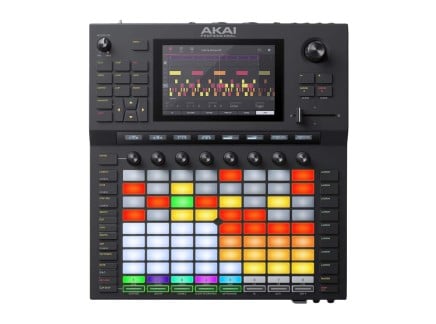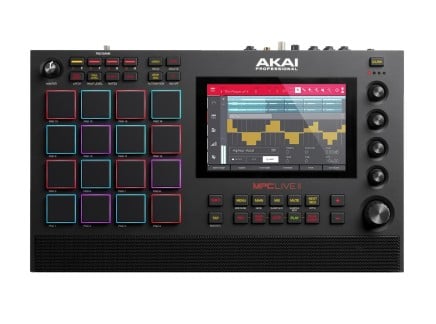In a recent Perfect Circuit chat, we dove deep into the Akai Force: an all-in-one production station made to act as the brain for any hardware-based setup. It can work as a standalone device, or can be used as the central hub for a MIDI or modular-based production environment.
Our hosts Trovarsi and BBoy Tech were joined by Ken Flux Pierce and Daniel Steele (aka DSTL), each contributing their own takes on the Force through conversation and a series of widely varied live performances. From downtempo grooves to the sounds of a break-dancing T-Rex, they showed just how much ground the Force can cover. And of course, each of the hosts being modular enthusiasts, they talk extensively about how they integrate the Force into their own modular-based setups.
So What is the Force?
Akai's Force is a standalone production station aimed to get you away from the computer. Not unlike a DAW in a box, the Force provides a wide range of utilities, and can act as its own self-contained instrument or as a central controller/sequencer for your MIDI or CV-based instruments. Featuring a distinctly Ableton-like workflow, the Force features an 8x8 clip launch matrix with 64 velocity-sensitive RGB-backlit performance pads, a 7" full-color multitouch display, and a host of audio, MIDI, and CV I/O that will make it easy to add into any studio. Add to that a wealth of built-in customizable controls (from crossfader to capacitive encoders) and you have a Force to be reckoned with.
Force's workflow is based around multiple internal sound and control generation engines. Individual tracks can handle audio recording/playback, MIDI tracks, sample playback, CV tracks, or even sound generation on one of the four internal virtual instruments. Edit audio right in the device, mix your entire track, use the integrated AIR effect engine to process your sounds—it's all up to you.
The q-link controls provide assignable hands-on controls for all the most important built-in features. These assignable knobs each have their own dedicated displays, so it's easy to see what each one controls at any given moment. These can be directly assigned to virtually anything you want—or they can dynamically shift as you change pages, or they can control aspects of your mixer. The 64 velocity-sensitive pads can act as clip launch controls, or can act as note sources. When used as a note controller, you have endless options for scale selection, intelligent one-pad chords, and even preset chord progressions...meaning that you have the ability to create melody and harmony in completely new ways, without needing any keyboard or music theory training. The pads can even act as a step sequencer, giving you the ability to do quasi-X0X sequencing with an easily navigable display.
Diving deeply into everything the Force can do would be silly—it is flexible enough that everyone who uses it will find their own idiosyncratic workflow. The Force has enough built in that every musician can really turn it into their own personal instrument for creating their own music. Use it as a super-powerful polysynth, as a sequencer for your modular gear, as an MPC-style sampler, as an audio editor and pseudo-DAW...all in one compact package. Check out the video above to hear how four tremendously creative people have made the Force their own...and maybe get some ideas about how you could make it your own too.









